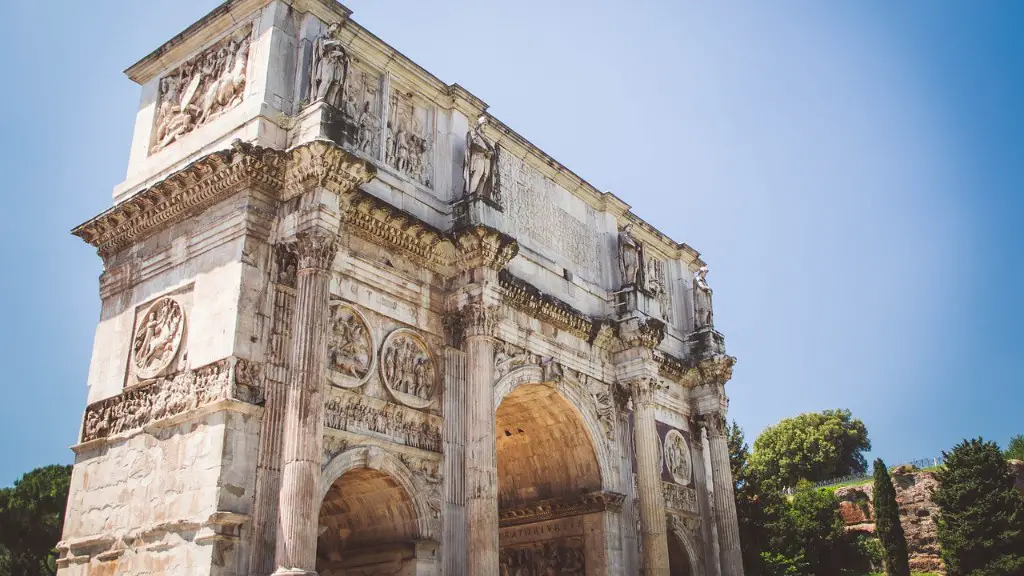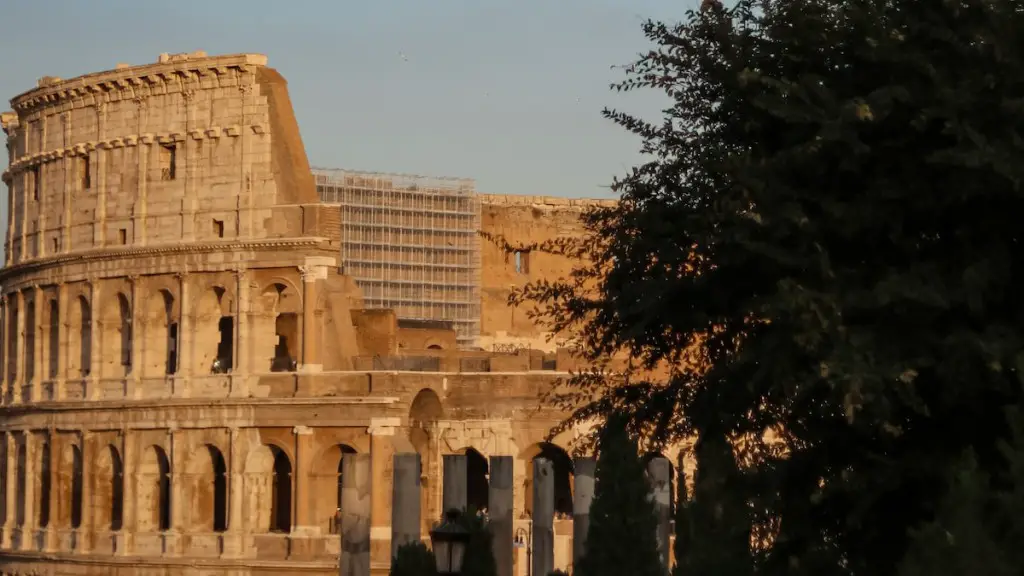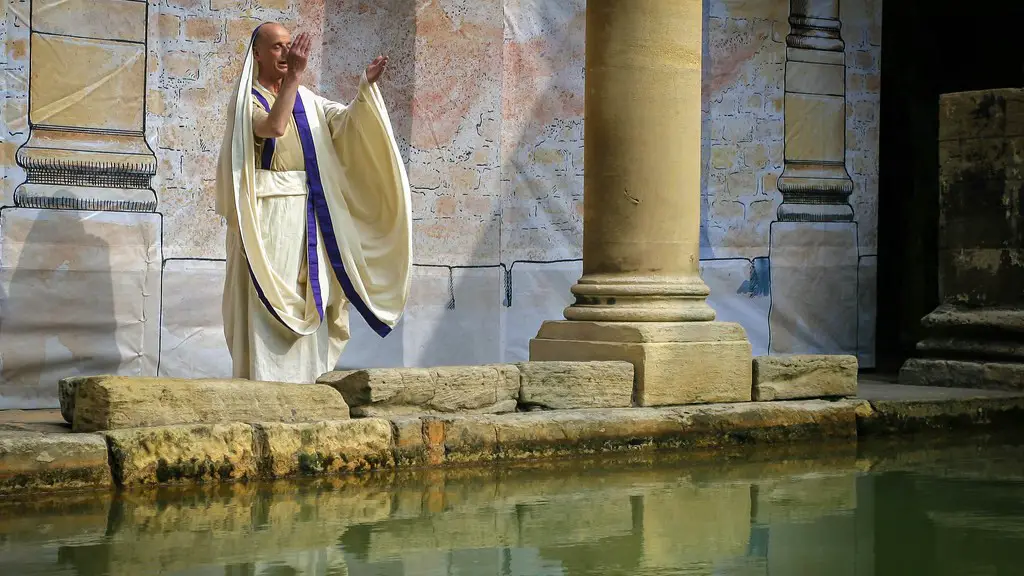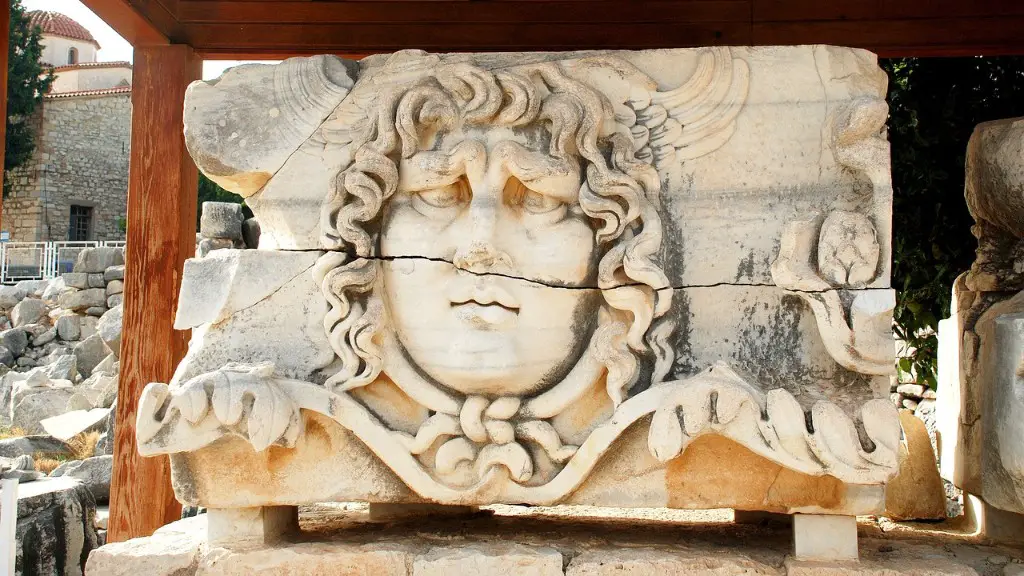History
Ancient Rome was a powerful and diverse ancient civilization, located between the Mediterranean Sea and the Apennine Mountains. It was the dominating cultural force in Europe for many centuries and the birthplace of modern day Europe. It was one of the most powerful, influential, and enduring empires of all time. Rome was founded in the 8th century B.C. by the legendarly Romulus and Remus. At its peak, Rome controlled much of the Mediterranean region, including Greece and Egypt, making it one of the largest empires in history.
The Roman Empire was in its most prosperous era during the 2nd century when the Pax Romana, or “Roman Peace”, was instated. This period of peace and prosperity lasted for nearly two hundred years, and because of that, Rome was at its most powerful and influential. The Roman Empire became the greatest superpower in its time, stretching across the Mediterranean and beyond. Rome was also home to a thriving culture complete with art, literature, architecture, engineering, and many other facets of human endeavors.
Economy
The Roman economy was built on two principles: centralization and divinity. Centralization ensured that Rome’s government was easy to control and had complete control over its people. While the Roman government wasn’t the most democratic, it was highly functioning, with the Senate and Consuls making the majority of the laws. The government wasn’t the only powerful institution however; Rome was also heavily influenced by their powerful gods and goddesses. This divinity provided Rome with a sense of divine protection and reinforced their authority.
The economy of the Roman Empire was based largely on trade, with many goods being imported and exported to sustain the expanding empire. Rome had its own currency, the denarius, which was made from either silver or bronze. This currency was used to pay for goods and services, similar to how we use money today. Roman currency also served as a way to generate wealth, as well as being a means of control. In addition to its centralized government, Rome has also generally well-managed its economy.
Culture
The Roman Empire was an influential and creative force in society. Rome was influenced by many cultures that it encountered, including those from Greece, Egypt, and the Middle East. As the Empire expanded, Rome made use of the resources and ideas of their conquered territories to make their own culture even more impressive.
Rome had an expansive library filled with books, scrolls, and other documents. This gave them access to a vast library of knowledge, which was used to advance their culture and write their own literature. Rome also excelled at architecture and engineering. The aqueducts were one of the marvels of the Roman world and remain impressive even today. Famous landmarks such as the Colosseum showcase the brilliant artistry and skill of the Roman architects.
In addition to art, Rome excelled at producing great thinkers who shared their ideas and philosophies. This fostered the development of great thinkers throughout the Roman Empire, who challenged convention and pushed the boundaries of knowledge. This wealthy of knowledge served as the foundation of the Enlightenment period.
Warfare
The Roman Empire was a large and expansive power, stretching from the Middle East to Western Europe. This expansion also meant that Rome was often involved in warfare, either to protect and expand its territory or to fight off their many enemies. The Roman Legion was one of the most powerful and formidable military forces in history, and it was with their help that the Empire was able to maintain its vast domain.
The Roman Legion was made up of tens of thousands of professional soldiers organized into a highly effective fighting force. The Legion was also well-equipped with both shields and swords, and they used a variety of tactics to overwhelm their opponents. The legion also had a well-developed training regimen, which enabled its soldiers to be more disciplined and effective in battle. The Roman Legion was a key part of Rome’s success, and it allowed the Empire to expand and prosper.
Technology
One of Rome’s keys to success was its access to and use of advanced technologies. While the Roman Empire was actually relatively backwards when it came to its technological advancements, it made use of the technologies it encountered from other cultures during its conquests. The most important of these advancements was the invention of concrete, which allowed for structures such as the Colosseum to be built. Rome also used roads and bridges to make travel and communication easier.
In the realm of medicine, Rome excelled at the use of herbs and surgical techniques to treat disease and improve health. The Romans also had an impressive transport system, made up of ships, wagons, and carts, which allowed goods and people to travel quickly. Rome also boasted its mastery of engineering, creating designs and inventions that are still being used in modern times.
Government
At the core of Rome’s greatness is its government. The Roman Republic was the oldest example of a republic in history and it is often seen as a blueprint for modern governments. Rome was led by two consuls, chosen each year, who acted as chief magistrates of the Republic. Under the consuls was a Senate, which was made up of powerful patrician families and dealt mainly with legislation and foreign policy.
The other major component of the Roman Republic was the assemblies. These were bicameral legislative bodies with the power to pass laws, elect consuls, and wage wars. The assemblies were made up of representatives from all parts of the Republic, who had a say in the workings of their government. This structure provided stability and allowed the government of the Republic to function smoothly and effectively.
Religion
Religion played a major role in Rome’s success and served as an important part of its culture. The Romans were polytheistic and believed in a pantheon of gods. Religion was a way of life for the Romans and was seen as an integral part of the social, political, and cultural life. Famous Roman rituals such as the Feast of Saturnalia and the Lupercalia exemplified the importance of religion in Roman lives.
Rome also had a state religion, which was based on the worship of the gods and goddesses of Rome. This was done in order to ward off evil spirits and maintain order in the empire, and was seen as a way of keeping the gods happy. This religious system ultimately helped to unify the empire and provided a common bond among the people.
Legacy
The legacy of ancient Rome is still felt to this day, both in terms of culture and in terms of modern government. Rome left an indelible mark on our culture with its art, architecture, literature, philosophy, and other accomplishments, and it is still studied by scholars around the world. Its government system of checks and balances, assemblies, and (somewhat) decentralized rule is still celebrated and emulated in modern times.
In spite of its decline and eventual fall, Rome remains one of the most influential civilizations in world history. Its legacy of literature, art, engineering, and politics continues to inspire and shape the modern world, and its achievements serve as a reminder of the great power that can come from a single civilization.




